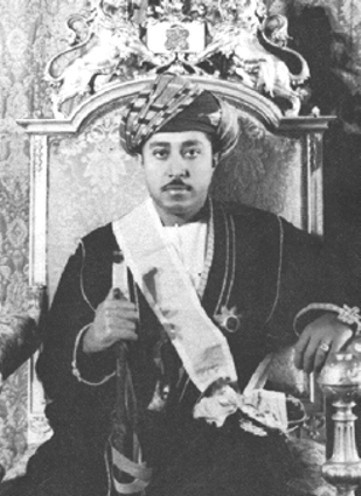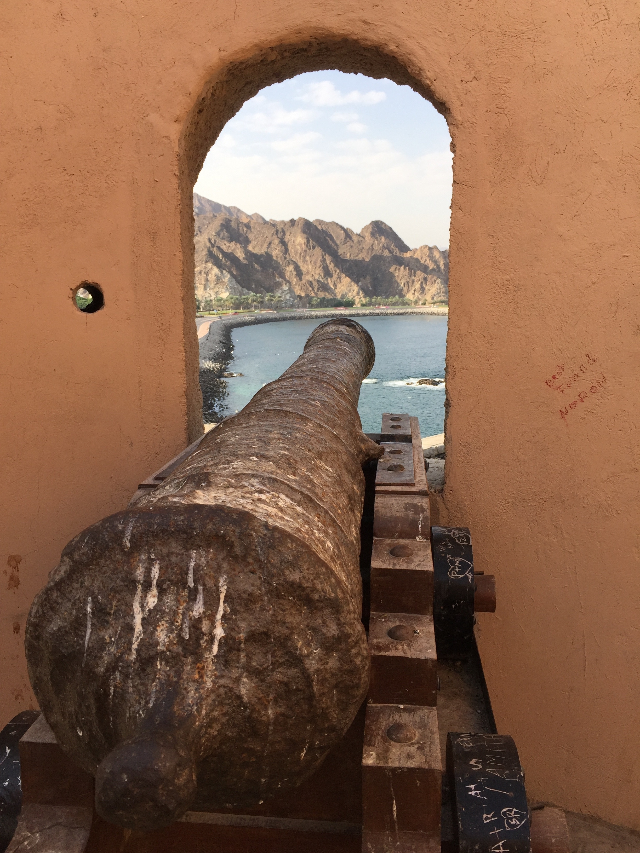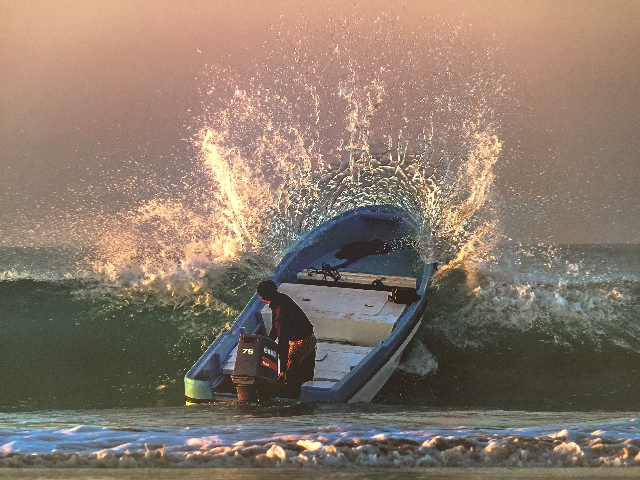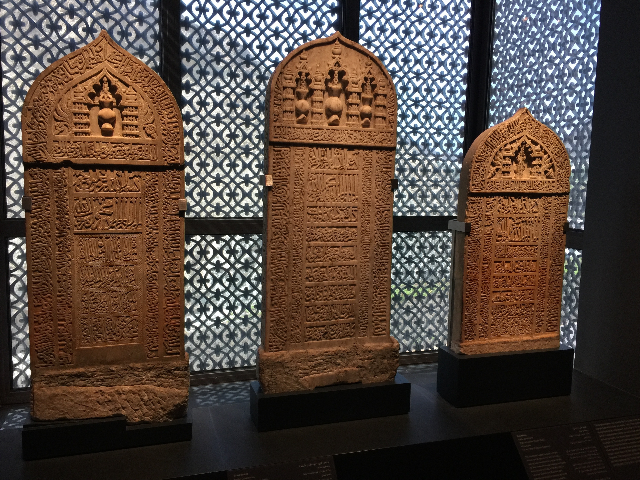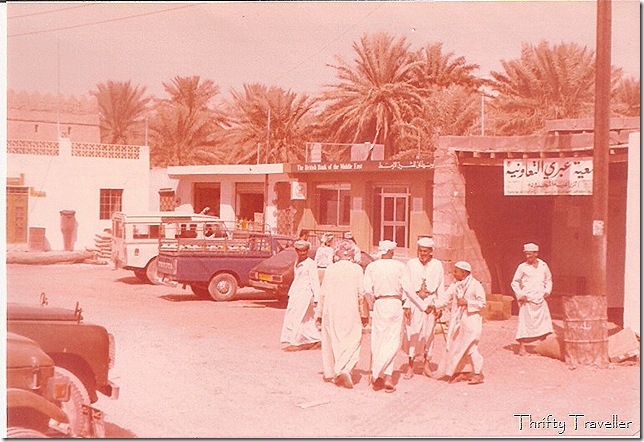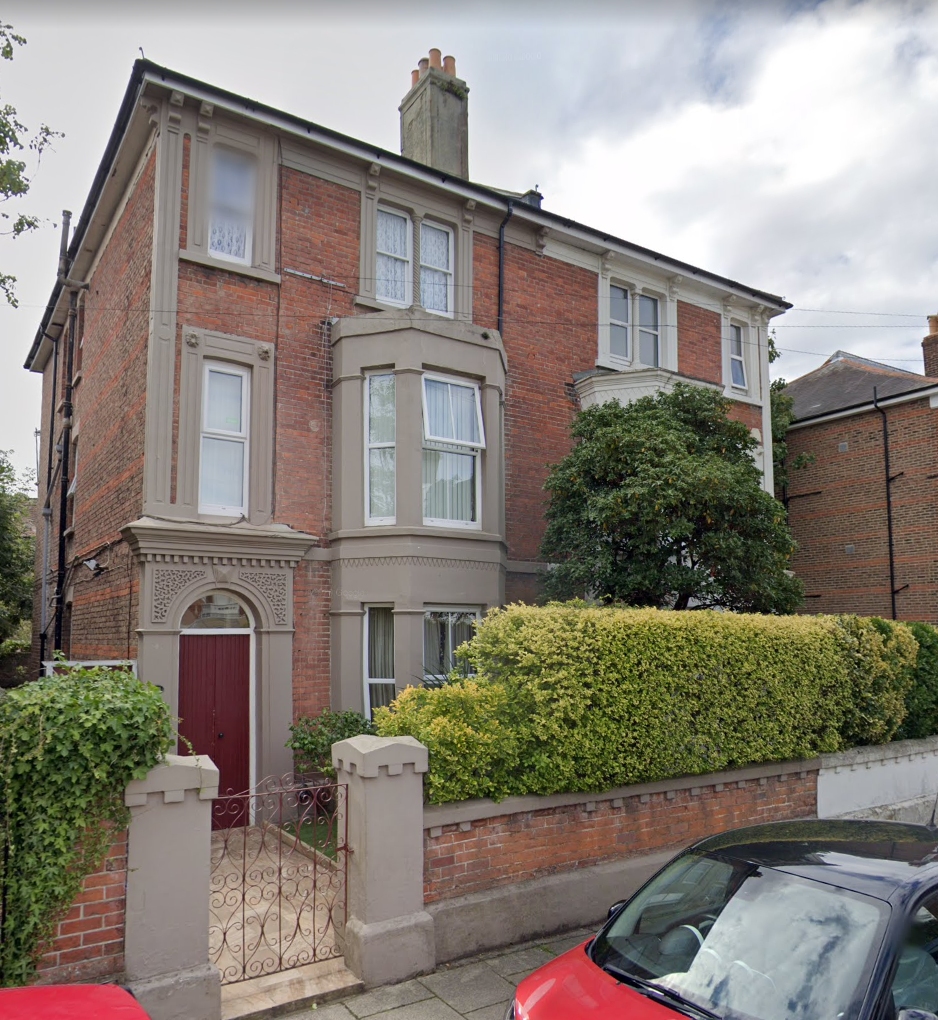
This relatively modest semi-detached house at 24 Victoria Grove, Southsea (Portsmouth) was, for over 50 years, the home in exile of Sayyid Jamshid bin Abdullah, the last Sultan of Zanzibar. This was not the life he would have expected. How did he end up here?

Sayyid Jamshid was born into privilege on 16 September 1929 in Zanzibar and would have spent his youth flitting between palatial residences like this country palace at Kibweni. He acceded to the throne in July 1963 following the death of his father Sultan Abdullah bin Khalifa Al-Said. He could not have imagined that his reign would only last seven months.

Zanzibar is an archipelago off the East African coast. The islands are famous for spices, particularly cloves. It was ruled by Oman from 1698 to 1858. A branch of the Omani Al-Busaid royal family ruled Zanzibar as Sultans as commemorated in this stamp marking their bicentennial in 1944. Zanzibar came under British protection from 1890 until December 1963 when it became an independent constitutional Sultanate. A month later the Sultan was deposed by a bloody revolt in which the majority black African population overthrew the minority Arab elite. Many Zanzibaris of Arab or mixed African/Arab descent relocated to Oman in 1964 fleeing riots that left thousands dead.
Sayyid Jamshid escaped to Oman, hoping to be granted permission to settle but when this was denied he flew to London with his entourage of 61 close family members and retainers. He spent some time in London hotels but was running short of money until he was granted a lump sum of £100,000 and a monthly allowance of £1500 by the British Government.
This money allowed him to settle in Southsea on the southern English coast. Why did he pick Southsea? Perhaps he liked the look of Portsmouth’s crest with its Islamic-style moon and crescent motif. Or maybe the seaside reminded him of his island paradise of Zanzibar. Or perhaps it was just better value for money compared to living in London.

It must have been a major culture shock for the former Sultan. He kept a low profile and his neighbours described him as a quiet and respectful man. Those who visited his home were often shown his complete collection of Zanzibari stamps from 1860s to 1960s bearing the portraits of himself and his 10 ancestor sultans.
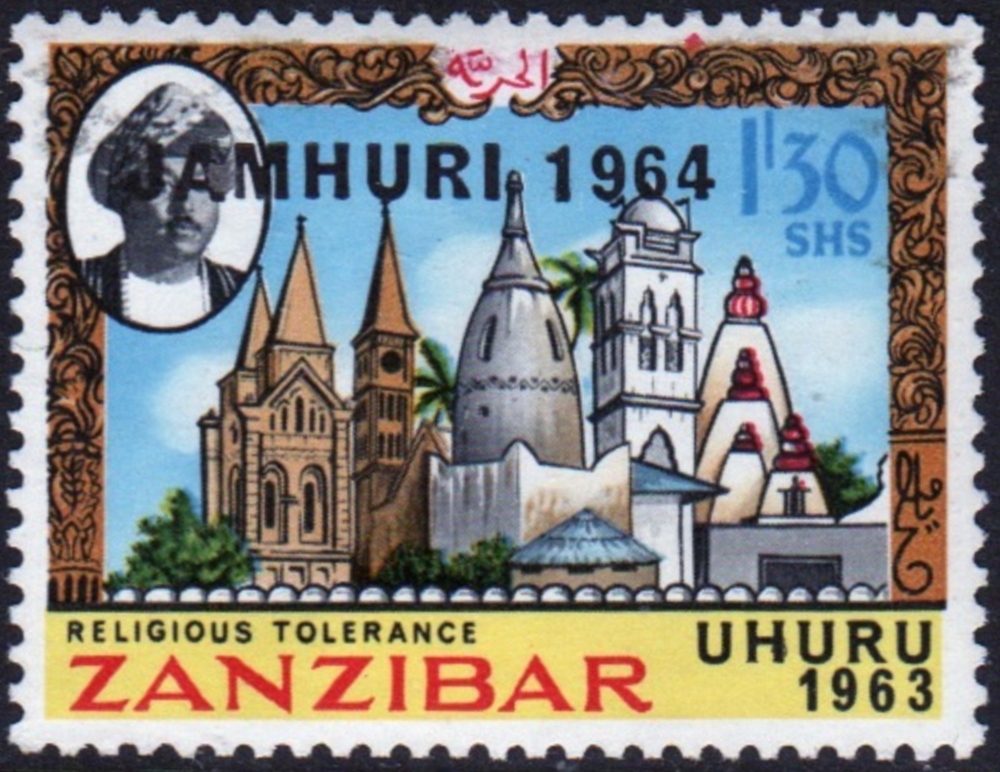
The stamps told the history of his life, with the first set of his reign commemorating Independence (Uhuru) from Britain which took place just six months after he became Sultan. The following month he was deposed and his portrait was defaced with an overprint proclaiming a republic (Jamhuri). Later that year, Zanzibar merged with Tanganyika to form Tanzania.
He continued to lobby for permission to move to Oman, the country of his ancestry, but these requests were rejected by Oman on security grounds, perhaps feeling that having two Sultans in the country could be destabilising. Many of his family members however were allowed to relocate to Oman in the years that followed.

In September 2020, after 56 years in exile, as a humanitarian gesture, he was finally given permission to return to Oman to spend his remaining years. He will have plenty of company. Tens of thousands of his former subjects and their descendants live in Oman after being granted citizenship in the 1970s and 1980s.
Here are some old photos of Stone Town, Zanzibar.

The main shopping street in 1936 decorated for the silver jubilee of the Sultan Sayyid Khalifa bin Haroub (the ninth Sultan of Zanzibar and grandfather of Jamshid bin Abdullah).

The same street from a different perspective. Perhaps taken during the 1960s judging by the car and the movie poster for Beau Geste.

An older view of the same street (now called Kenyatta Road) with Shangani Post Office on the right. A look on Google Maps Street View shows that the buildings are still all there, the only differences are that the Indian tailors have been replaced with tourist souvenir shops.
The yellow building on the right is now the Freddie Mercury Museum. Freddie Mercury (the Queen singer) was born in Stone Town Zanzibar with the name Farrokh Bulsara and came from a Parsi family. He and his parents, along with many other South Asian families, also fled Zanzibar in 1964.
Zanzibar looks an interesting place. I’ll have to visit one of these days.

